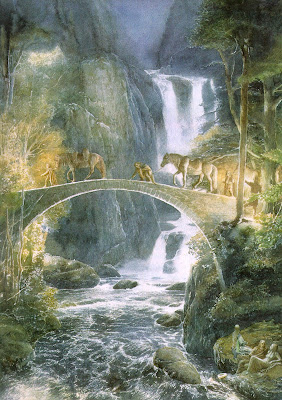NOTE: Don't forget to check out Scissortail this week (it goes on all day Friday and most of the day Saturday, too!). Full schedule is here: https://ecuscissortail.blogspot.com/2022/01/2022-schedule-of-readings.html
For next week (Tuesday), be sure to read through Chapter 10 (or close to that). Here are some ideas to consider:
* How equipped are the hobbits for the dangers of the outer world? How do they respond to the dangers in the Old Forest?
* One of the most controversial figures in the LOTR trilogy is the strange creature of the forest, Tom Bombadil. What kind of figure is he? Is he somewhat like Beorn, from The Hobbit? Or is he more like the Green Knight? And why did the movies leave him completely out of the story?
* Many critics find Tolkien's reliance on poetry in the LOTR trilogy and major weakness, particularly the kind that Tom Bombadil sings. How might this differ from the poetry we found in The Hobbit?
* Related to the above, how do the songs/poetry of different characters contrast with one another: for example, Frodo's songs and Gandalf's poem (in the letter)?
* Why doesn't Tom disappear when he puts on the Ring? And in general, why is he so unaffected by it? Does this seem to contradict Gandalf's explanation in the earlier chapters, or the fact that it is the One Ring, created by Sauron?
* Related to this, is Tom a kind of deus ex machina ("god in the machine"--meaning a god who swoops in and saves characters at the last minute) in the story? Is his presence and powers a little too convenient for the hobbits?
* Why is the outer world with its evil trees and Barrow-wights so malicious? And why do none of these things seem to exist in the Shire?
* We meet out first humans in Chapter 9, "At the Sign of the Prancing Pony." How do they contrast with the other most fantastic creatures of the previous chapters (elves, hobbits, etc.)?
* How does Tolkien initially characterize Strider? What might the reader assume he is? When does this characterization begin to change?
.jpeg)




